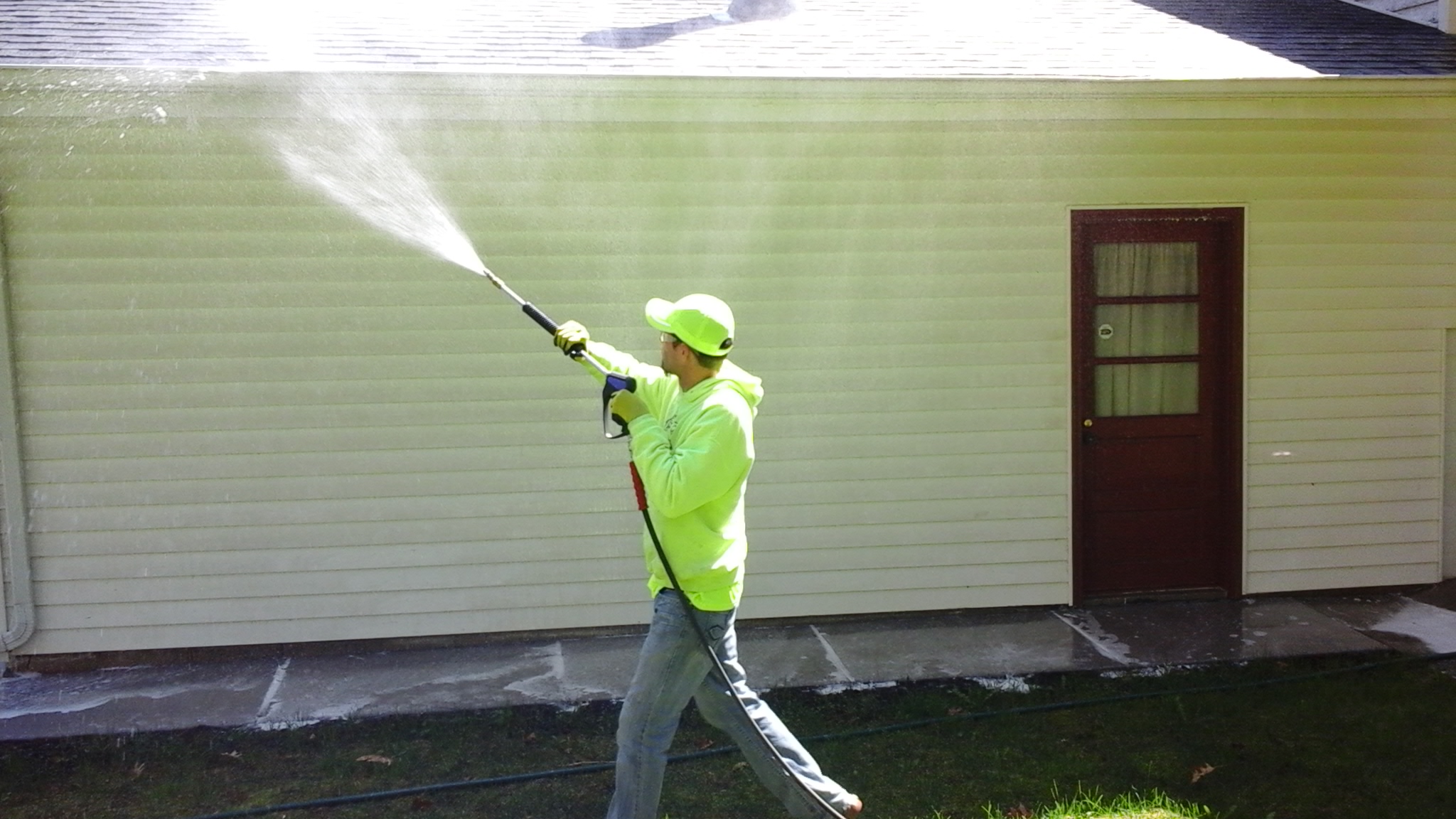Table Of Content

Most professionals suggest once a year, but that can depend on your location, how many trees surround the home, the weather, and the surface material. In some cases, every other year makes more sense so that the siding isn’t subjected to such heavy pressure every year, and a quick rinse with a strong hose can suffice in between. Allowing dirt to build up on the outside of a home can reduce the efficiency of the siding’s inherent insulation. Worse, it can clog, coat, or cover critical ventilation that allows the home to breathe and vent the byproducts of heating and cooling systems. If the energy bill has been edging up, consider whether cleaning the exterior and vent system would let the house do its job better. The immediate perimeter of the building will be flooded with water as the house is cleaned, and that water may have diluted cleaner in it.
House Materials
A simple solution of bleach and water works well on hard, non-porous surfaces. Apply it with a spray bottle, gently brush the area, and rinse with clean water. You can pressure wash most types of stucco, provided you take steps to protect the delicate surface. If your machine offers a lower gallons-per-minute setting, choose that, and set a fairly wide spray radius so pressure on the siding is dispersed. More delicate types of stucco, such as bottle-dash and rock-dash stucco, should not be pressure washed.
Safety Tips
It’s natural to want to know more about this process, especially if you’re doing it for the first time. By taking these post-wash steps, you’re not just cleaning your house; you’re preparing it for a fresh start. Whether you’re repainting or just enjoying the renewed look of your home, these actions help maintain its beauty and value. By following these steps, you can ensure a thorough clean that rejuvenates your home’s exterior, all while keeping things safe and efficient. With your equipment ready, it’s time to move on to the pressure washing itself. Preparing your pressure washer properly is essential for a safe and effective cleaning session.
Power-Washing Mold-Prone Surfaces
If you’re planning to repaint, you’ll definitely want to pressure wash first to prepare the surface. For areas with a lot of trees or exposure to pollution, you might need to do it more often. If you’re not confident, it might be safer to call in a professional, especially for delicate materials or hard-to-reach areas. First, protect your plants and garden areas with plastic sheeting or drop cloths. Then, make sure all your windows and doors are closed tightly.
What’s the correct PSI for my home’s siding?
Pressure washing helps you spruce up your home and prepare the exterior for painting. This cleaning process should be part of your annual or biannual routine to boost curb appeal. Preparing your house for power washing is vital to get the best results and keep your property safe. We’ve seen that preparation is vital, from covering plants and closing windows to selecting the right cleaning solution. The actual washing process, done in sections from the bottom up, can transform the look of your house, clearing away years of dirt and grime. After washing, if you’re planning to paint, give your house time to dry and prepare it properly for the best results.
DIY vs. Hiring a Professional
Best Electric Pressure Washer Reviews 2024 - Pro Tool Reviews
Best Electric Pressure Washer Reviews 2024.
Posted: Fri, 05 Jan 2024 08:00:00 GMT [source]
If you see any mold or mildew, treat those areas with a mix of bleach and water on hard surfaces, or with undiluted vinegar on porous surfaces such as wood. For houses with more than two stories, setting up scaffolding is a smart move. It’s safer than using a ladder (which we never recommend), as the force of the water can throw off your balance. Scaffolding provides a stable platform, allowing you to reach high areas without the risk.
First impressions are important to the value the buyer sees, so it’s reasonable to take a step to make that first impression one of a home that is ready to move into. All the fresh paint and careful staging work inside won’t matter if the outside doesn’t appeal. In addition, pressure washing the home will reduce the likelihood of pests, again adding to a clean bill of health from the inspector. The house will look better from the street when the trim is pristine, the siding gleams, and the driveway and walkway are clean and welcoming.
Even so, check the sill on the inside and dry up any water that leaked through. Direct the spray away from breakable objects like windows and outside lights, and remove house numbers and window boxes whenever possible. Hold the wand with two hands and move it across the siding from side to side at a steady pace.
It’s a good idea to avoid washing in the strong summer sun, which could dry the cleaning agents before you are able to rinse them off. With a combination of proper cleaning products, scrubbing, good technique, and a thorough rinse, your home will soon be clean as a whistle once more. According to Macfarlane, you shouldn't need to power wash your house more than twice a year—but there is one spot in particular to keep a close eye on. "The northern exposure of a home is more prone to a buildup of moss and lichens because the area receives less direct sunlight, which may need more frequent power washing," he says. The best rule of thumb is to pressure wash your house once per year at minimum. This is largely dependent on your city's weather and climate, however.
Roofing is inherently dangerous, as a fall from a roof could seriously injure or kill you. Roofers have specialized equipment and training to help prevent accidents. If you do it yourself, you’ll need to take special care to ensure you get everything. It can take as little as 30 minutes to an hour to pressure wash a one-story 2,500-square-foot house. Depending on the extent of dirt and size of the house, you may need to invest as much as 3 hours or more. So, investing in one is a good idea if you plan to use it regularly – and you should.
From the siding, then move closer until you find the optimal cleaning distance. In general, work at a horizontal or slightly downward angle to avoid driving water up under the siding. In a 5-gallon bucket, mix the mildewcide (available at home centers or wherever you rent the machine) with water according to the manufacturer’s directions. Add bleach at a volume of one part for every nine parts of the mildewcide-detergent solution. Protect shrubbery, plants, gardens, and lawn by covering with drop cloths or plastic sheeting. Close windows and doors, and duct tape or cover with plastic sheeting if your doors and windows are prone to leaking Secure all sheeting/cloths with duct tape.
Hawaii and Alaska also ring up high costs at $463 and $371, respectively. "Cleaning tough stains and grime on your home exterior may first require a detergent—you'll use a low-pressure spray pattern to apply this," Macfarlane continues. If you use a detergent, let it sit on the surface for a few minutes and then work the pressure washer from top to bottom in small sections. If you have a two-story home, he recommends getting spray tips and extensions to make sure you can reach the areas that are higher up. Once you have finished pressure washing your home, turn off the pressure washer and disconnect it from the garden hose.

No comments:
Post a Comment